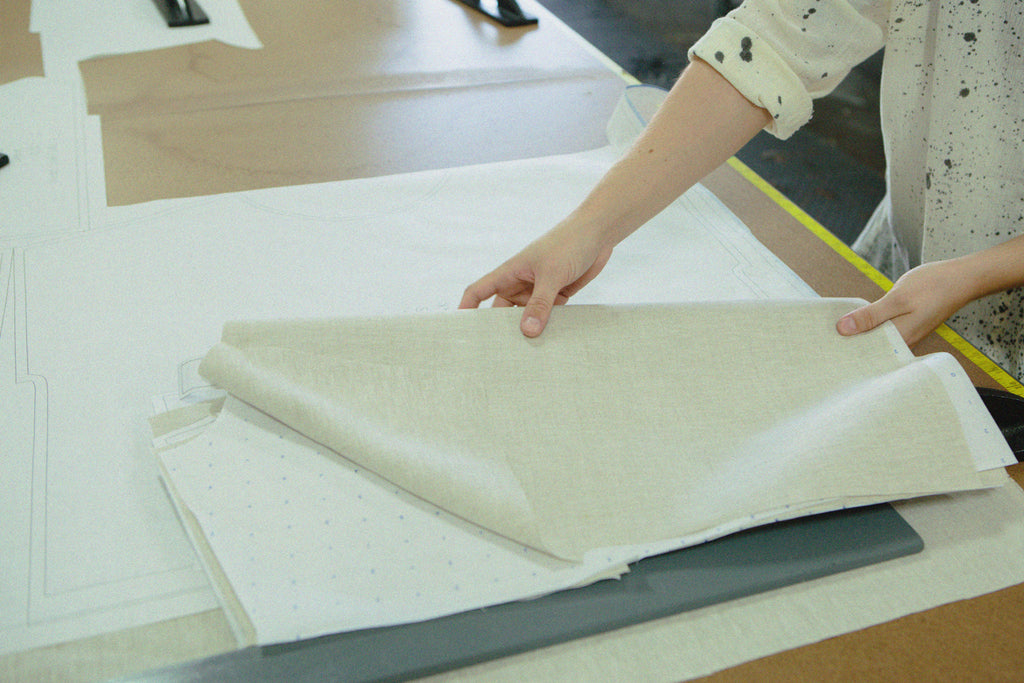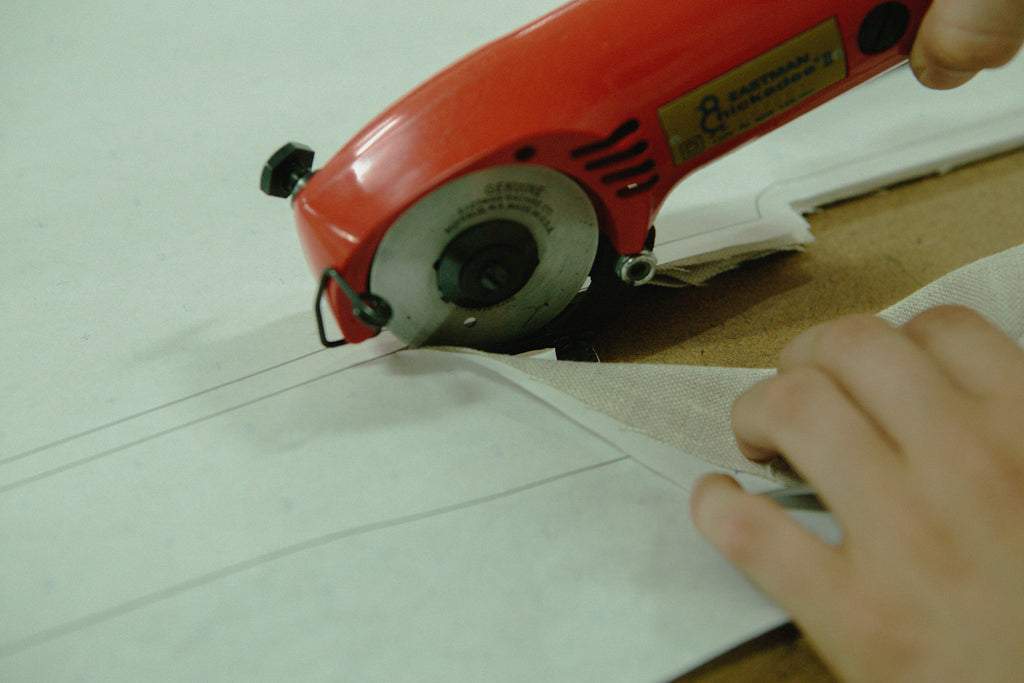When we talk about what makes quality clothing, our minds tend to focus on sourcing quality fibers and masterful sewing techniques rather than fabric cutting. In this post, we take a look at the the often-overlooked yet crucial role that precision cutting plays in the crafting of high-quality garments.

The Need for Precision
In our recent Instagram Reel, we showed a peek at our fabric cutting process for making sample garments – a process that in reality moves much slower than in a timelapse video! Cutting is a time-consuming endeavor, especially when producing only a few garments at a time. The significance of this process might not be apparent at first glance, but it profoundly influences the overall quality of the final product.
Understanding the Grainline
One of the fundamental aspects impacted by fabric cutting is the garment's grainline. Woven fabrics consist of interwoven threads, and the orientation of these threads plays a key role in the final fit. Proper alignment on the fabric's straight grain ensures that the finished garment hangs correctly, with straight seams and well-positioned hems. To achieve this precision, innate understanding of grainline and careful, meticulous placement of the fabric layers is essential.

Managing Shrinkage
All fabrics shrink differently—even the same exact fabric from different dye lots or different production runs shrink differently. If the cut garment from the unwashed material doesn’t account for the exact shrinkage of the material it’s being cut from, the final fit of the garment will vary widely after it’s washed. Failure to account for these variations early on can lead to significant fit discrepancies after washing.
In our process, we thoroughly test shrinkage before production begins, pattern adjustments are made based on unique shrinkage rates, and our fabric and pattern files are meticulously tracked all the way to the cutting table. The cutting process becomes a strategic dance to ensure the final fit remains consistent and true to the intended design.

It's the Little Things
Precision in cutting requires attention to even the (seemingly) smallest of details. A 1/4” deviation from the printed pattern might sound like a reasonable margin of error when cutting by hand, but it can create a noticeable difference in the final garment's fit. Looking at our Clyde Work Pant which has four vertical seams, creating eight unique vertical edges, a 1/4” discrepancies could result in 2” of excess or missing fabric from the final circumference of the pant leg! This seemingly small margin of error would make a significant and noticeable difference in the fit of the pant. Precision is paramount in the cutting process. To cut precisely, the fabric must be kept stable and the pattern should be cut exactly along the printed edges. We always double check our cuts afterward to make sure we didn’t miss anything.

Our Commitment to the Process
In the process of garment-making, fabric cutting is a key phase that significantly impacts the quality of the final product. While the occasional error is inevitable, especially considering our clothing is made by real hands, our commitment to consistency in the cutting process ensures that each garment is set up for success as it progresses through each stage of production. The next time you slip into a meticulously crafted Elizabeth Suzann garment, remember the unseen artistry behind it – the art of fabric cutting.

Leave a comment